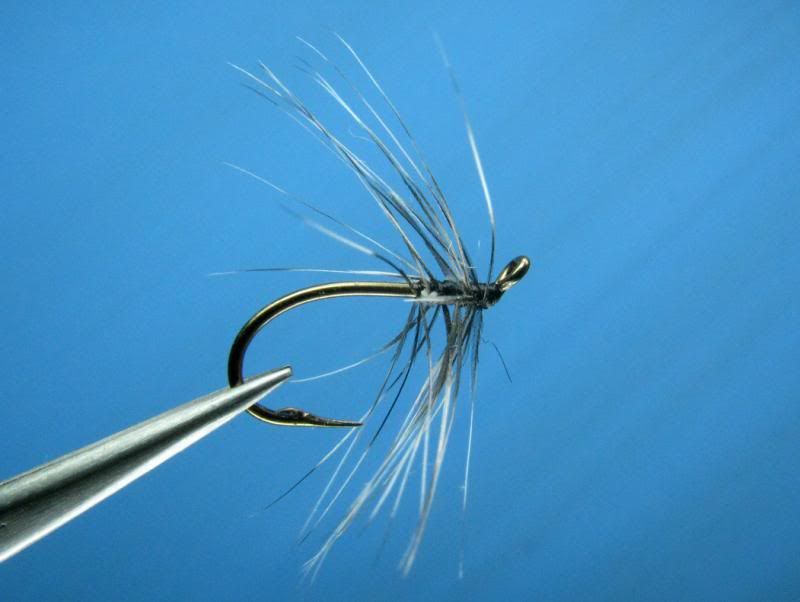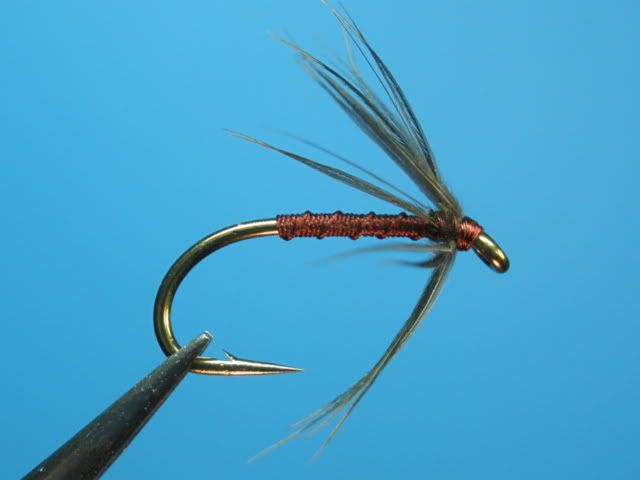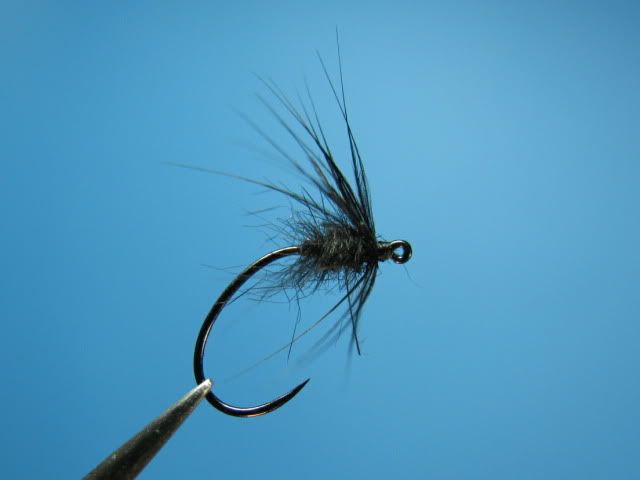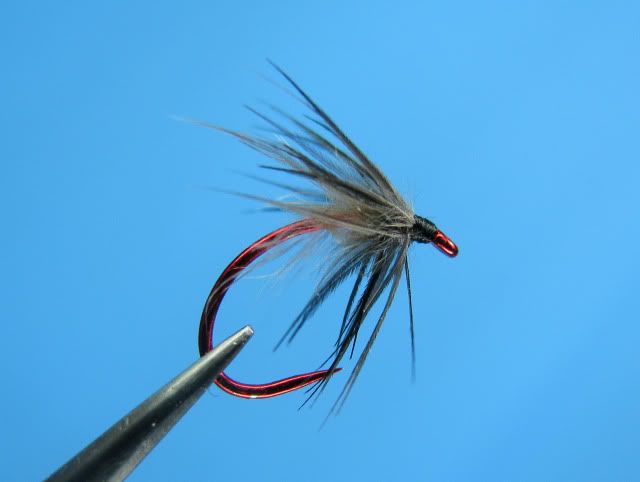Otto, I wanted to offer something of substance to your question, but I'm afraid I'll offer the same "inconclusive" as most others have. I think there only two points that come to mind. First, the fish see the hook and ignore it, focusing rather on any positive trigger that registers as food potential. That's only relevant when the fish sees the entire fly, which I suspect doesn't actually happen often in the film or above until it reaches the window. For a fly in the film or above, the hook is the only thing the fish sees along with the dimples and light bending made by materials in/on the surface until it enters the vision cone. Below surface, they must again, just ignore it.
The other thing that comes to mind is that when the object is illuminated in the water and reflected in the mirror, it reflects its surroundings, which is the idea behind the Alec Jackson crystal finish on the North Country Spider hooks. (these images below are severe in an attempt to show the hook, which typically is far more concealed and of less consequence.) By some underwater observations flies are reported to take on a great deal of reflectance and translucence of materials to each other and all materials to the surrounding environment. When the presence of the hook is doubled in the mirror, I would think it would be important even if ignored to create an opportunity for hook to cause as little interference as possible. Just a thought. But the the bright finished hooks have been great for me this season. I can't say if that's true when they are down deeper away from the film.
Alec Jackson North Country Spider hook #16
 Grizzly Spider #16
Grizzly Spider #16

I would put more faith in the middle ground of most modern bronze hooks, where some reflectance occurs and mostly the hook color doesn't disrupt the overall cohesion of the flies design. The crystal finish may be highly reflective and become less observable than a darker hook, but then you can't discount the bling factor with a hook like that. I tied all my Stewart style flies and most North Country Spiders on the AJ hooks this past season and certainly didn't see a negative effect in takes.
Looking for a standard practice it is still the finish of the Daiichi hooks. A bit brighter than some, but not to the extent of causing potential unnatural bling. Or is it that we sometimes want bling. All the variables make these discussions troublesome.
Dark Claret Silk on Daiichi 1530

Daiichi 1530
As Jeff pointed out, the darker bronzed hooks have been highly effective for quite some time. Who could argue with that, but I have to put more faith in the fish focusing on positive triggers and ignoring non relevant information. They must, they work very well. I have a little #17 Llama and Starling fly on one of these dark, upeyed hooks that is a killer.
Spring Black on Vintage Mustad...something.

vint bronze
The topic of black hooks for me, requires a full on commitment to believing the fish ignores even the most obvious unnatural aspects. I don't have a strong commitment to any theory or observation and I have a hard time trusting anyone who claims to know. All you can do it try them and when they work, they do. I have to choose something, and based on some theory and experience, so black is at the bottom of my list unless imitating a very dark or black insect that might benefit from the continuity of the color scheme.
I would expect this pattern to work with a black hook, but I haven't fished it. A cool little configuration, but any decent trout would straighten this hook in a second. But it's delicate and I would expect it to get a take before I pull in a straightened hook.
Hen and Mole on Black Jig Hook (maker unknown or forgotten)

Black jig hook
Now this is something that we've seen from more than one member, fishing a bare red hook and connecting. Chris Stewart and someone else a bit ago posted a couple fish pics with just a red hook in it's lip. Can't argue with that either.
Starling Duff and Red #16 (I don't have a pic of a bare red hook.)

I don't know what's gotten into me. Just chatty I guess. A hundred theories and they are all true at any given time.
w


 Daiichi 1530
Daiichi 1530 vint bronze
vint bronze Black jig hook
Black jig hook